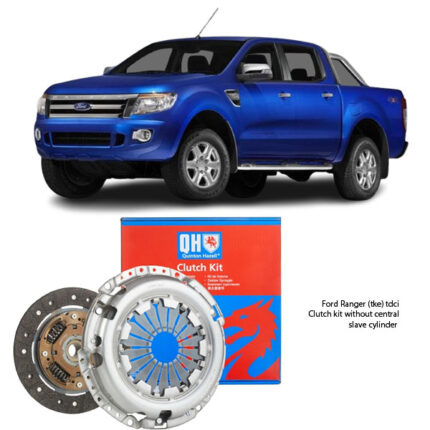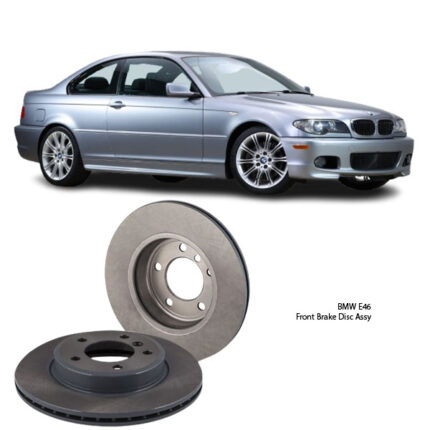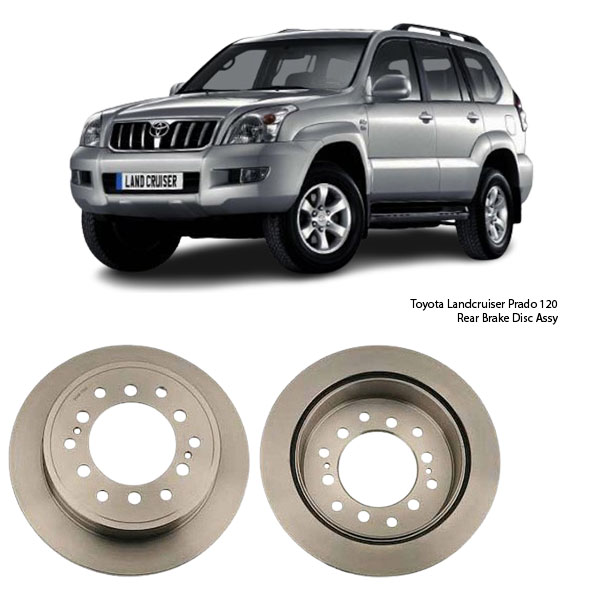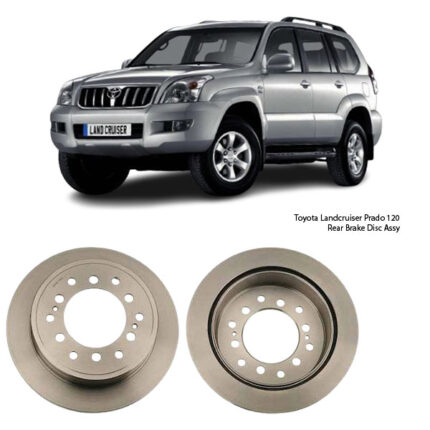Get Toyota Landcruiser Prado 120 Series Rear Brake Disc Assy RN1216Vin Kenya
The Rear Brake Disc Assembly is a critical component in a vehicle’s braking system. It plays an essential role in slowing down or stopping the vehicle by creating friction with the brake pads. Designed to handle intense heat and high levels of stress, the rear brake disc is mounted on the rear wheel hub and rotates in tandem with the wheel. When the brake pedal is applied, hydraulic pressure forces the brake pads against the spinning disc, converting kinetic energy into thermal energy and thereby reducing the vehicle’s speed.
A rear brake disc assembly is composed of a high-grade cast iron or composite rotor, which is carefully machined to precise tolerances for even surface contact and balanced rotation. This ensures optimal performance, efficient braking, and long-term reliability under various driving conditions.
Advantages of a High-Quality Rear Brake Disc Assembly
Choosing a well-made, precision-engineered rear brake disc offers several performance, safety, and maintenance benefits:
1. Consistent Braking Performance
A high-quality disc provides smooth, stable deceleration without vibrations or noise. It maintains effective braking even under repeated or prolonged use, helping to reduce stopping distances and improve control during braking.
2. Enhanced Heat Dissipation
Efficient heat dissipation is vital for braking efficiency. Superior brake discs are designed with optimized ventilation or material composition that allows heat to disperse rapidly, minimizing the risk of brake fade, warping, or premature wear.
3. Corrosion Resistance
Premium discs are often treated with protective coatings or made from corrosion-resistant alloys, which help prolong their life, especially in humid or salt-prone environments. This feature maintains braking integrity over time and reduces maintenance intervals.
4. Balanced and True Rotational Design
Properly balanced discs prevent wobbling or uneven pad wear. Precision machining ensures that the disc maintains a consistent thickness and shape, reducing vibration during braking and helping preserve other brake components.
5. Longer Lifespan
High-quality brake discs last longer and resist cracking, scoring, or grooving. They reduce the risk of irregular wear patterns, which can damage associated parts like calipers and pads.
Disadvantages of a Poor-Quality or Damaged Brake Disc
Using substandard or worn-out rear brake discs can negatively affect overall vehicle safety and performance. The disadvantages include:
1. Reduced Braking Efficiency
Low-quality discs may not generate enough friction or fail to retain structural integrity under high temperatures. This can lead to increased stopping distances or a sluggish brake response.
2. Brake Fade and Overheating
Inferior materials and poor design can lead to overheating during repeated braking. This causes brake fade, where the braking power is significantly reduced, posing serious safety risks, especially during emergency braking or downhill driving.
3. Increased Wear on Brake Pads
Uneven disc surfaces or low-quality metal compositions can lead to accelerated brake pad wear. Grooved or warped discs cause inconsistent contact, leading to noise, vibration, and frequent replacement of pads.
4. Vibrations and Noise
Discs that are not properly balanced or are deformed due to overheating can cause vibrations through the brake pedal or steering wheel during braking. In some cases, squealing or grinding noises may also occur.
5. Potential Damage to Other Components
Poor brake disc performance can strain other parts of the braking system, including calipers and wheel bearings. The stress from uneven braking forces can contribute to premature wear and more extensive repairs.
Common Signs of a Worn-Out Rear Brake Disc
Monitoring the condition of the rear brake disc is essential for maintaining vehicle safety. Several symptoms may indicate the need for replacement:
1. Visible Grooves or Scoring
A brake disc that shows deep lines, grooves, or ridges on its surface may be excessively worn or damaged. This usually results from metal-on-metal contact when pads wear down completely or poor disc quality.
2. Warping or Uneven Thickness
A warped disc may cause pulsation or shaking during braking. Measuring disc thickness at multiple points can reveal uneven wear, which compromises braking performance.
3. Increased Stopping Distance
A noticeable decline in braking efficiency or delayed response when pressing the brake pedal may suggest a deteriorating disc surface or structural integrity.
4. Squealing or Grinding Noises
Noises during braking often indicate that the disc or pads are damaged. Squealing may come from glazed surfaces, while grinding suggests metal contact due to pad wear.
5. Brake Warning Light
Some vehicles are equipped with brake wear sensors or systems that illuminate a warning light when components like pads or discs are worn or compromised.
How to Fit a Rear Brake Disc Assembly
Replacing a rear brake disc assembly requires careful attention to detail and adherence to safety standards. The process generally includes the following steps:
1. Preparation
-
Park the vehicle on a level surface and engage the parking brake.
-
Use a jack to lift the rear of the vehicle and secure it on jack stands.
-
Remove the rear wheels to access the brake components.
2. Remove the Caliper and Pads
-
Unbolt the brake caliper from its bracket using the appropriate socket or wrench.
-
Secure the caliper with a wire or strap to prevent strain on the brake hose.
-
Remove the brake pads and inspect them for wear.
3. Detach the Caliper Bracket (if necessary)
-
Some brake discs cannot be removed without taking off the caliper mounting bracket. Remove the bolts and set the bracket aside.
4. Remove the Old Brake Disc
-
If the disc is stuck due to corrosion, gently tap it with a rubber mallet or use penetrating fluid around the hub area.
-
Slide the disc off the hub carefully.
5. Clean the Hub Surface
-
Use a wire brush or emery cloth to clean the wheel hub.
-
Ensure there’s no rust or debris that could prevent the new disc from sitting flush against the hub.
6. Install the New Brake Disc
-
Align the new disc with the wheel hub and slide it into place.
-
Some discs may have alignment holes or retaining screws—install them as needed.
7. Reinstall the Caliper Bracket and Pads
-
Reattach the caliper bracket using the manufacturer’s torque settings.
-
Install new or existing brake pads into the caliper bracket.
-
Position the caliper over the pads and secure it with bolts.
8. Final Checks
-
Ensure all bolts are torqued to the manufacturer’s specifications.
-
Spin the disc by hand to ensure it moves freely without contact.
-
Reinstall the wheel, lower the vehicle, and pump the brake pedal to reset the caliper pistons before driving.
Follow us on Facebook for more parts.





Reviews
Clear filtersThere are no reviews yet.